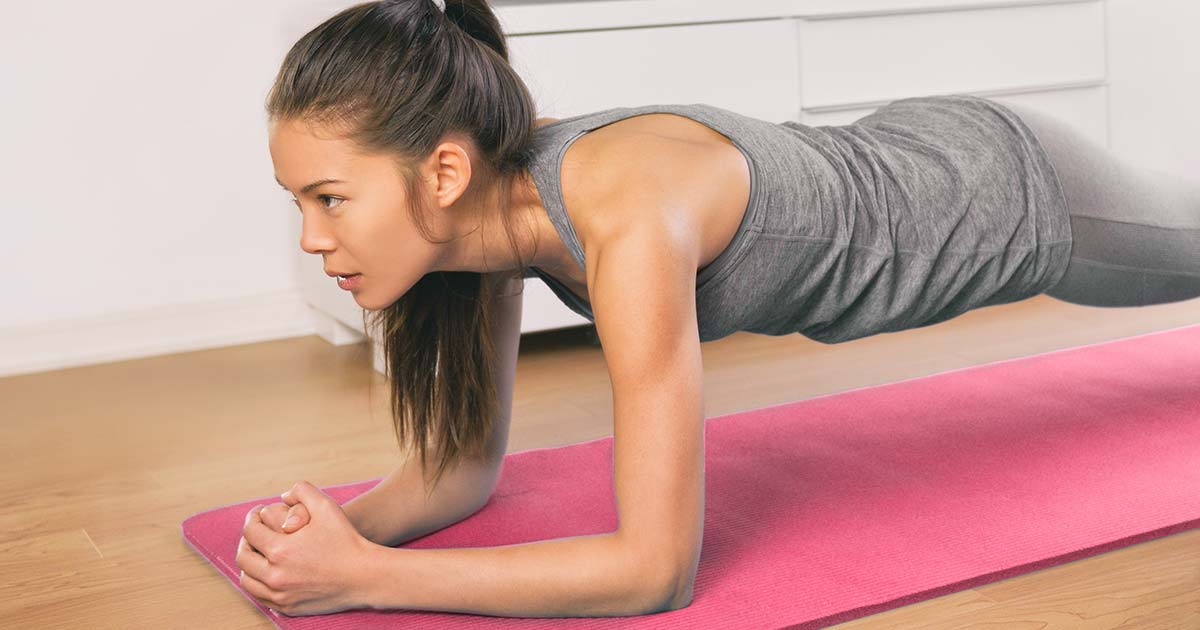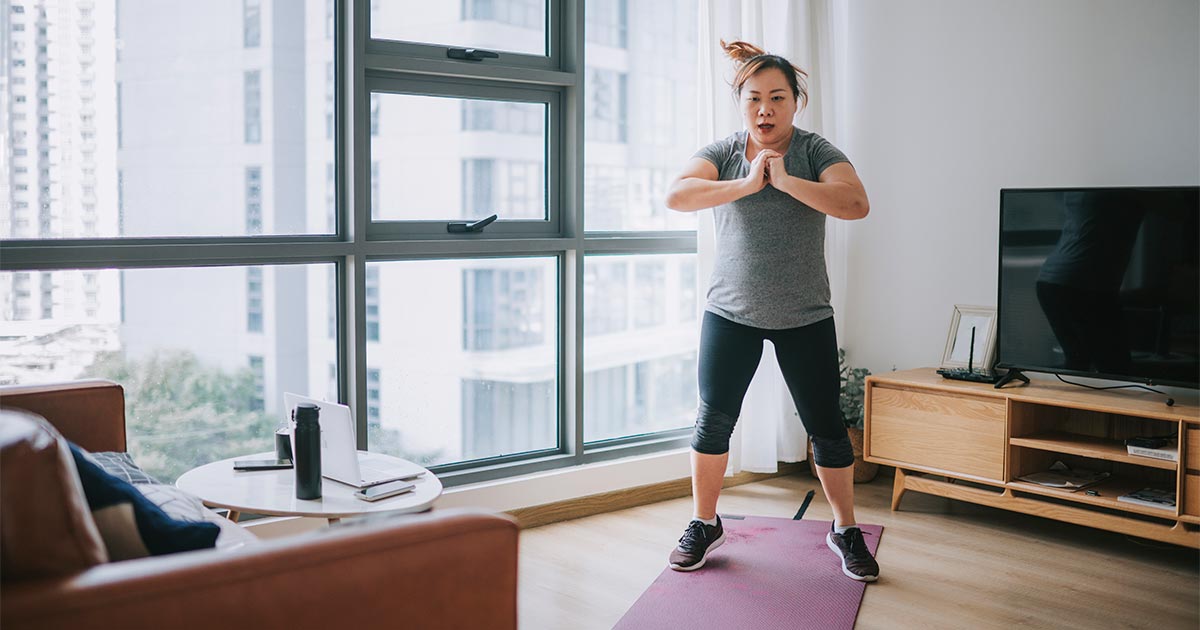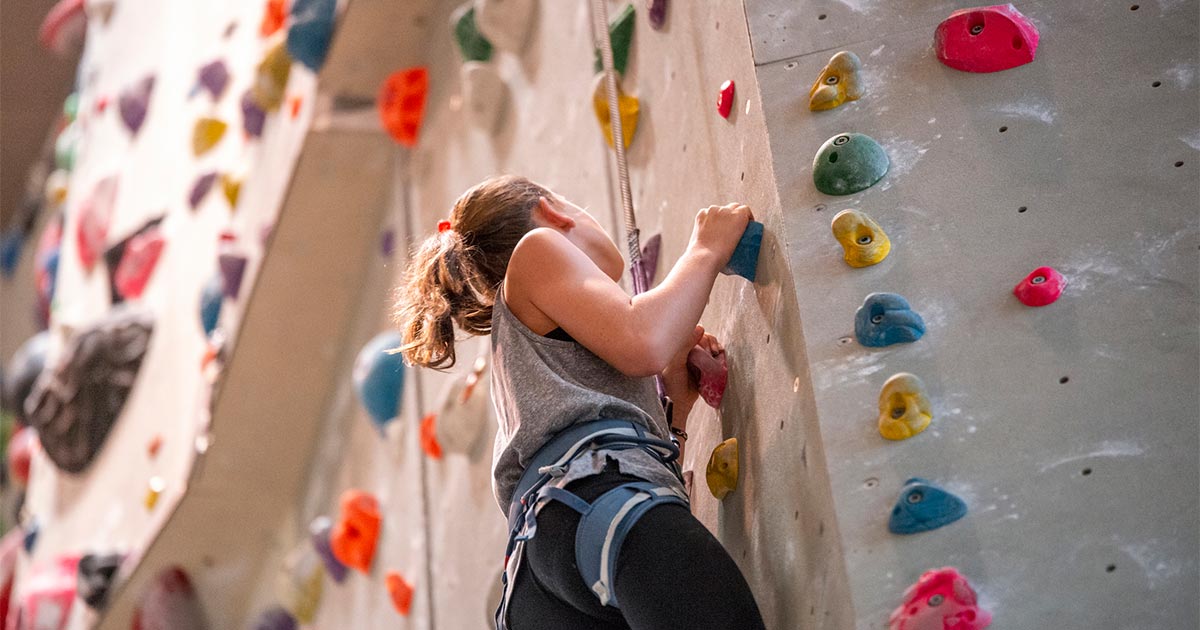
Advice to improve your movement, fitness, and overall health from the #1 in orthopedics in the U.S.
A Beginner’s Guide to Plyometrics Workouts
These fast, explosive movements can benefit athletes in many types of sports, including tennis and golf.
Advice to improve your movement, fitness, and overall health from the #1 in orthopedics in the U.S.

If you’ve heard the term before, it’s likely been associated with jumping movements like box jumps. But plyometrics actually applies to any exercise or activity that is short, fast and explosive, allowing you to generate maximum force in the muscle in the shortest period of time.
Though high-level athletes have long trained this way, plyometric exercises have caught on with the more casual fitness enthusiast in recent years.
“There are a lot of benefits to adding plyometric moves to your workouts, including improved strength, explosiveness, speed, agility and power,” says Matthew Accetta, an exercise physiologist at HSS. “People see others trying it on Instagram or in the gym and think, that person looks like they’re working hard, I want to try it too.”
It can also have benefits for athletes in a wide variety of sports. “You may not think golf or tennis as an explosive sport, but swinging that club or racket and trying to get maximal force onto the ball is an explosive movement,” Accetta says. “If you’re a runner trying to pick up your mile time, plyometrics can help. It’s also useful in basketball, football—all the sports where you need to do something quick and powerful in a short period of time.”
But jumping in with both feet (or even one foot) can lead to injury if plyometric exercises aren’t done properly from the beginning. “Rather than taking the time to learn the movements, because it looks relatively easy, people just jump right in, but that’s what leads to injuries,” Accetta says. “They get too confident too quickly and don’t focus on the fundamentals of the movement, but rather just try to copy what they see.”
Below, Accetta shares a plan for plyometrics beginners to reap all the benefits of this type of training while avoiding the pitfalls.
Start by learning proper form
“Whenever I’m teaching anybody plyometrics, I start off with simple moves, and I focus on landing first,” Accetta says. An easy, basic move is a drop squat.
Start off with your legs hip width apart, feet planted flat on the floor. Raise up onto your tip toes and hold for a few seconds. Then drop down into a squat position, with your knees in alignment over your shoes, and hold the position.
“This will teach you where you’ll be as you land after you jump,” Accetta says. “It’s very simple, low-risk and teaches you an essential movement pattern so you can eventually progress.” Learning to absorb force properly is particularly beneficial to runners, who absorb an intense amount of load with each foot strike on the ground.
Introduce some easy plyometric moves
Once you feel you’ve mastered the proper positioning, you can transition to things like pogo jumps on one leg or two legs—anything where you’re bouncing on the balls of your feet, to practice absorbing the force on your feet and legs.
You can also try some upper body plyometric moves. “People forget there are two kinds of plyometrics—lower body, which is jumping, and upper body, which is throwing motions. Things like medicine ball slams and chest passes, slamming a medicine ball into the ground, those are all plyometric motions as well.”
Up the intensity
Your next progression is called the depth drop. Standing on a small box eight to 12 inches off the ground, step off and land in a squat position.
“You want to focus on the landing motion,” says Accetta. “This move is more dynamic but still low intensity, so you can learn to absorb the added force properly. When you do progress to a higher intensity and the movement forces become greater, you’ll be able to absorb and redistribute them in the right way.”
Go full plyometric
Once you’re comfortable absorbing force safely, you can begin to try more complicated, explosive moves. “It’s important to start with exercises where there’s no external barrier or resistance—just your own body weight,” Accetta says. Some examples he recommends are squat jumps, tuck jumps and single-leg jumps.
The next progression would be exercises that incorporate equipment, such as box jumps or jumping over hurdles.
General plyometrics tips for beginners
- Limit plyometrics to one to two times per week. “You want to leave yourself time to recover and be sure you’re not having any linger soreness or pain,” Accetta says.
- Plyometrics should always be done at the beginning of a workout. “Because they’re the most explosive, fatiguing, draining exercises, you want to make sure that you’re fresh when you’re doing them,” Accetta says. “That way you can get the most out of them and still reduce your likelihood of injury.
- If possible, practice plyometrics in the mirror. This way, you’ll be able to check that you’re keeping your body in proper alignment. When you land from a jump, check to be sure that your knees stay over your toes, you don’t collapse your upper body and you land with your feet flat on the floor. Your landing should be quiet—if you make a loud thud when you hit the ground, you’re not absorbing the force properly.
- Plyometrics can be combined with other movements. “If you’re doing an upper body plyometric workout, you can train your lower body that day,” Accetta says. “Just make sure it’s not on the same muscle group.”
- Combine plyometrics with strength training, not cardio. If you’re just going for a run or a bike ride, save your plyometrics training for a day that you’re doing other strength moves. “Plyometrics are anaerobic exercises, like strength exercises are,” says Accetta. “Regular aerobic training should be separate.”
- Warm up first and foam roll after. A simple dynamic warm up, like five minutes of light jogging followed by five minutes of high knees, butt kicks, skipping or side shuffling, is enough before getting into plyometrics. After you finish your whole workout (not in between plyometrics and your strength session), foam rolling is recommended to prevent soreness.
Published 8/15/2021


